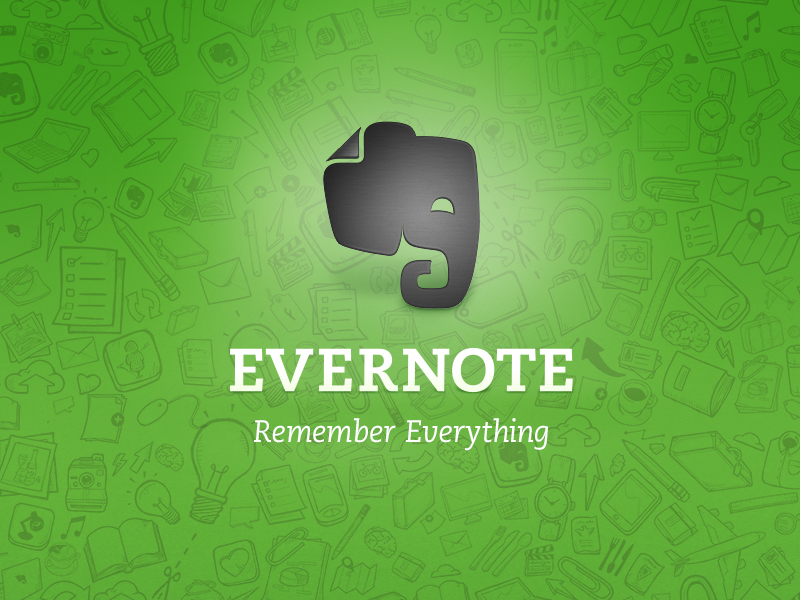Evernote 5.8.13.8152 Item Preview 71Fl+HeBgmL.jpg. Remove-circle Share or Embed This Item. Evernote uses cookies to enable the Evernote service and to improve your experience with us. To learn more, check out our cookie policy. By clicking OK or continuing to use our site, you agree that we can place these cookies.
The first thing I do when I start a new writing project isn’t outlining or researching.
Nope — first, I set up an Evernote folder expressly for that project.

Haven’t heard of Evernote?
It’s a free app that lets you collect about a half-dozen types of notes (text, screenshots, photos, voice memos and more), organizing them with tags and folders so you never lose anything. Whether you’re working on a novel, your blog, or work for clients, Evernote can shave tons of hassle and friction from your writing process.
You can access your notes three ways: through a program on your computer, through any web browser or through a smartphone app. Your notes sync across all your devices, so you always have access to everything from your grocery list to your novel notes.
I affectionately refer to Evernote as my “exobrain.”
One reason I love Evernote is because it’s so adaptable to anyone’s writing process.
Here’s a quick Evernote guide with five ways I use it for every writing project.


1. Collect research
From learning about flintlock pistols for your steampunk zombie novel to tracking down statistics for an article on immigration, writing requires research.
This is what Evernote was born for.
Whenever you come across internet research pertinent to your project, you can save it directly into a project folder in Evernote with the web clipper extension for your browser. Photos, articles, bookmarks and even screenshots all sync into the program without having to leave your browser.
Evernote even has a feature on the smartphone app that allows you to quickly snap photos — of the cover of a book you want to read later, scenery that’s perfect for world building, you name it.
Need to capture written text? The “page camera” feature is optimized for handwriting or typed content.
2. Gather your thoughts and find inspiration
When you’re a writer, the world’s fair game, right?
We take inspiration where we can get it — and Evernote is perfect for quickly capturing ideas and epiphanies in the moment.
I used to jot down interesting ideas I didn’t know what to do with on scraps of paper and throw them in an ideas file folder. Odd character quirks, overheard scraps of dialogue, photographs of fascinating places, and ideas for stories I wanted to pitch to magazines all lived in a chaotic, unsearchable mess.
As often as not, though, those little scraps of paper also ended up going through the wash or getting tossed out by accident.
Now, I write them directly into Evernote in an inspiration file that I can visit whenever I’m looking for a little creative boost. Plus, it’s searchable, and I can tag ideas with things like “character” or “article” so I can easily find the right category later.
You can even leave yourself a voice memo if you don’t have time to type.
3. Work on the go
Evernote 5.8.6
Stop logging onto social media to kill time, and start using Evernote instead to write a few hundred words on your latest project.
While some writers enjoy drafting in Evernote, I prefer typing up scenes and then pasting them into my Scrivener file when I’m back at my laptop. Evernote isn’t bad to write full drafts in, though — it has most of the same features you would find in a dedicated word processor, including fonts, alignments and styles.
You can also fill those spare minutes by reading through some of the research articles you may have clipped from the web, saving to read later.
4. Organize your edits
If you’re working on a larger project — whether that’s a novel, memoir or feature article — there are a lot of balls to juggle. Particularly when it comes to the editing stage.
I tend to use Evernote a lot during the editing process, creating checklists for myself of problems I need to fix, or continuity issues I need to watch out for. This lets me jot down any thoughts I have (like the need to check the color of a character’s eyes, or add references to an event earlier in the story) without breaking my writing workflow.

When I get ready to do an editing pass, I categorize all of those tasks, then check them off the list as I fix them.
5. Collaborate with others
If your writing requires any sort of collaboration, Evernote makes it easy to share what you’re working on.
Along with the ability to share notes and folders, Evernote also offers a dressed-down chat platform that allows you to converse about what you’re working on.
Then, instead of looking through your email, text messages, or Slack to find out what conversations you had about a certain subject, they’re all saved (and searchable) in your Evernote.
Have you tried Evernote to streamline your writing process? What are your favorite tips and tricks?
Featured resource
Content Marketing for Journalists
Use your journalism experience to make a fantastic income with content marketing.
/cdn.vox-cdn.com/assets/1672305/evernote52.jpg)
Notes organize your life, Evernote organizes your notes
Older versions of Evernote
It's not uncommon for the latest version of an app to cause problems when installed on older smartphones. Sometimes newer versions of apps may not work with your device due to system incompatibilities. Until the app developer has fixed the problem, try using an older version of the app. If you need a rollback of Evernote, check out the app's version history on Uptodown. It includes all the file versions available to download off Uptodown for that app. Download rollbacks of Evernote for Windows. Any version of Evernote distributed on Uptodown is completely virus-free and free to download at no cost.Evernote 5 Download
Evernote 5 For Windows
See more